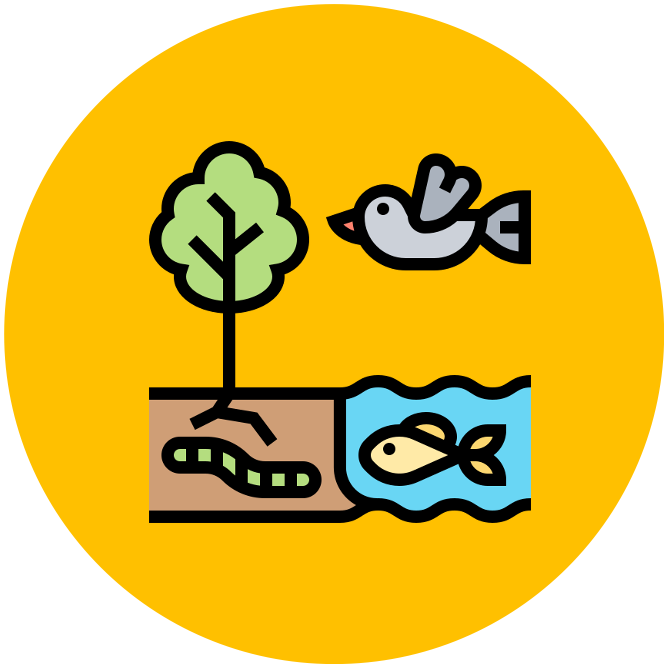

Energy Transfer
SL Content Statements
-
C4.2.1
Ecosystems as open systems in which both energy and matter can enter and exit
-
Students should know that in closed systems only energy is able to pass in and out.
-
C4.2.2
Sunlight as the principal source of energy that sustains most ecosystems
-
Include exceptions such as ecosystems in caves and below the levels of light penetration in oceans.
NOS: Laws in science are generalized principles, or rules of thumb, formulated to describe patterns observed in nature. Unlike theories, they do not offer explanations, but describe phenomena. Like theories, they can be used to make predictions. Students should be able to outline the features of useful generalizations.
-
C4.2.3
Flow of chemical energy through food chains
-
Students should appreciate that chemical energy passes to a consumer as it feeds on an organism that is the previous stage in a food chain.
-
C4.2.4
Construction of food chains and food webs to represent feeding relationships in a community
-
Represent relationships in a local community if possible. Arrows indicate the direction of transfer of energy and biomass.
-
C4.2.5
Supply of energy to decomposers as carbon compounds in organic matter coming from dead organisms
-
Include faeces, dead parts of organisms and dead whole organisms.
-
C4.2.6
Autotrophs as organisms that use external energy sources to synthesize carbon compounds from simple inorganic substances
-
Students should understand that energy is required for carbon fixation and for the anabolic reactions that build macromolecules.
-
C4.2.7
Use of light as the external energy source in photoautotrophs and oxidation reactions as the energy source in chemoautotrophs
-
Students should understand that oxidation reactions release energy, so they are useful in living organisms. Include iron-oxidizing bacteria as an example of a chemoautotroph.
-
C4.2.8
Heterotrophs as organisms that use carbon compounds obtained from other organisms to synthesize the carbon compounds that they require
-
Students should appreciate that complex carbon compounds such as proteins and nucleic acids are digested either externally or internally and are then assimilated by constructing the carbon compounds that are required.
-
C4.2.9
Release of energy in both autotrophs and heterotrophs by oxidation of carbon compounds in cell respiration
-
Students are not required to be familiar with photoheterotrophs.
-
C4.2.10
Classification of organisms into trophic levels
-
Use the terms “producer”, “primary consumer”, “secondary consumer” and “tertiary consumer”. Students should appreciate that many organisms have a varied diet and occupy different trophic levels in different food chains.
-
C4.2.11
Construction of energy pyramids
-
AOS: Students should use research data from specific ecosystems to represent energy transfer and energy losses between trophic levels in food chains.
-
C4.2.12
Restrictions on the number of trophic levels in ecosystems due to energy losses
-
Decomposers and detritus feeders are not usually considered to be part of food chains. However, students should understand the role of these organisms in energy transformations in food chains. Consider the causes of energy loss.
-
C4.2.13
Heat loss to the environment in both autotrophs and heterotrophs due to conversion of chemical energy to heat in cell respiration
-
Include the idea that energy transfers are not 100% efficient so heat is produced both when ATP is produced in cell respiration and when it is used in cells.
-
C4.2.14
Restrictions on the number of trophic levels in ecosystems due to energy losses
-
At each successive stage in food chains there are fewer organisms or smaller organisms. There is therefore less biomass, but the energy content per unit mass is not reduced.



